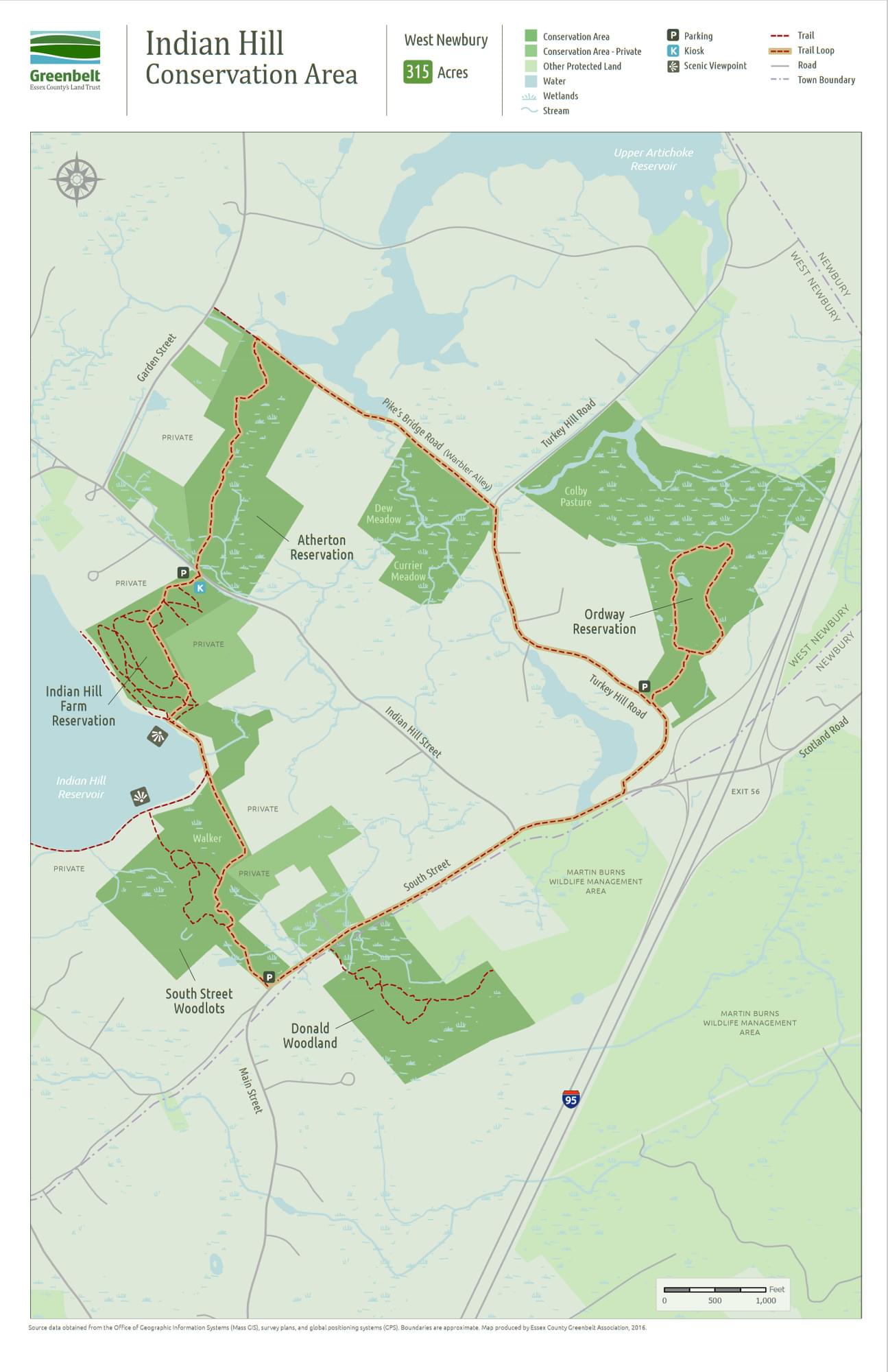Indian Hill Farm (ECGA)
Indian Hill Farm (ECGA)
Essex County Greenbelt Association Indian Hill Street West Newbury, Massachusetts 01985
Official WebsiteIndian Hill Reservation map
About this Location
Indian Hill Conservation Area is West Newbury’s emerald necklace, a 315-acre ribbon of protected open space and public trails that showcases the region’s natural beauty and rich cultural history. A network of protected properties provides an expansive and varied landscape that allows visitors to walk for hours on interconnected trails.
The Indian Hill Conservation Area features wetlands, open meadows full of wildflowers, woodlands with towering oaks and maples, and a legendary birding location known as “Warbler Alley.”
As its name suggests, Indian Hill is an Indigenous site. It was the site of an Algonquian agricultural village. Meadows and grasslands on the southwest-facing, gently sloping skirts of Indian Hill began as Pennacook-Pawtucket cornfields. In addition to corn, the people grew squash, beans, pumpkins, and sunflowers, which are native to New England and have edible tubers.
Indian Hill’s waters contribute to the Merrimack River via the Artichoke River, named for the explorer Samuel de Champlain’s 1603 account of sunflower tubers. Champlain wrote that they tasted like artichokes. Puritan settlers, believing they were building a new holy land, later named them Jerusalem Artichokes and gave the Merrimack tributary the name Artichoke River.
Many of the trees and plants you see on the reservation that make up this Conservation Area were protected and managed by the Algonquians who lived here. They used all parts of the chokecherry, for example, to make fruit leathers, medicinal teas, and smoking mixtures. They used juniper berries in fermentation, poultices, and pain-relieving medicines, and they flavored and colored their corn mashes with goldenrod flowers.
Indian Hill Farm reached its modern heyday under the ownership of famed editor and newspaperman Major Ben Perley Poore, who was also a gentleman farmer and avid horticulturist. Visitors will find exceptional dry-stacked stone walls and cart paths that meander through the woods to this day.
Migrant warblers and songbirds are abundant in spring, especially along the “warbler alley” section of Pikes Bridge Road. Look for raptors soaring above Indian Hill and waterfowl on the reservoir. Stop and listen from field edges at dawn and dusk in spring for the Woodcock courtship flight. Deer and turkey are common.
Features
Restrooms on site
Wheelchair accessible trail
Entrance fee
Content from Official Website
Last updated January 20, 2024
